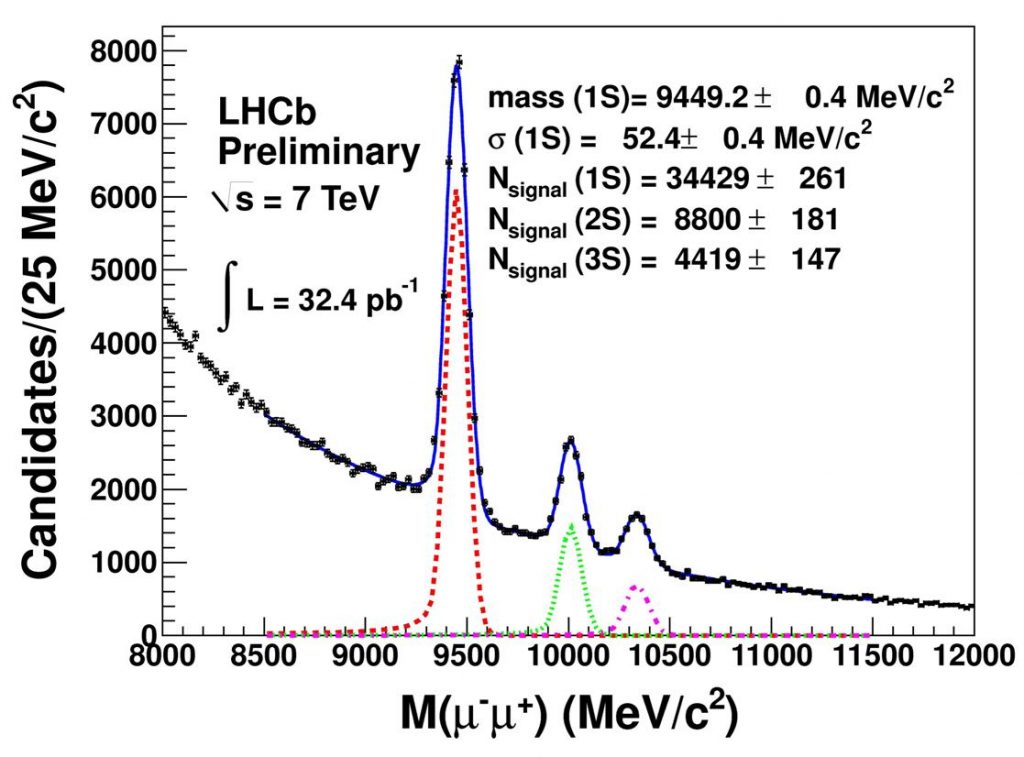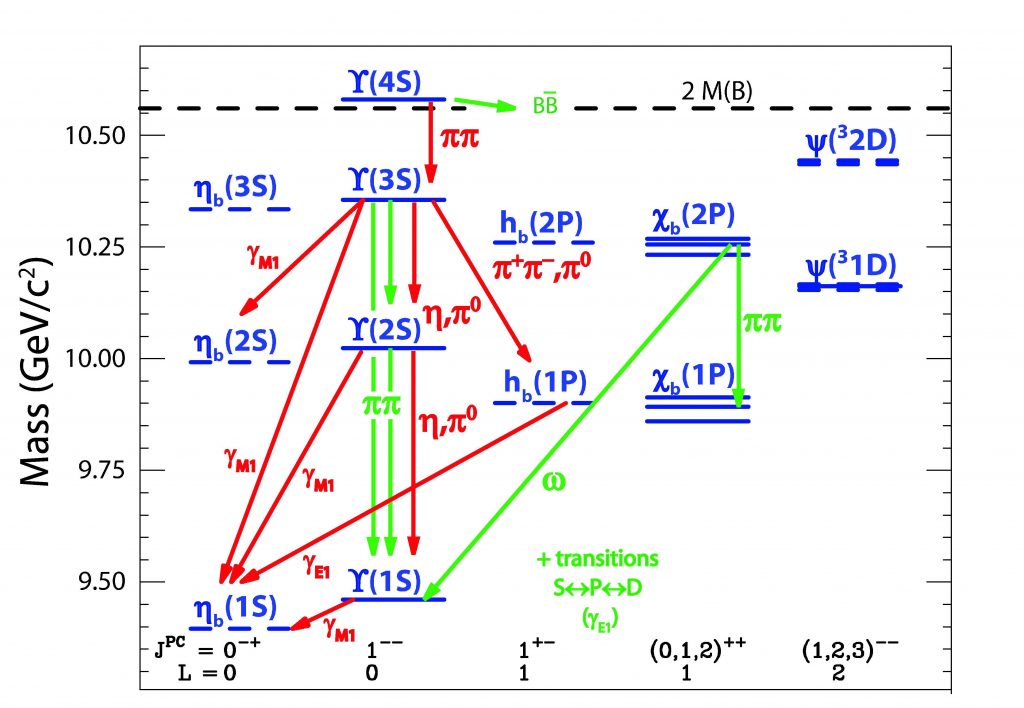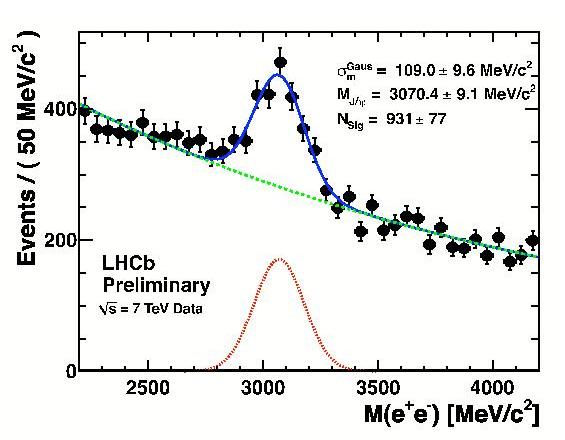The LHCb has observed beautiful atoms. The atoms are bound states of the beauty quark and anti-beauty quark. The atoms are bound by the strong force, the force which also binds quarks inside proton. The beautiful atom is 10 times heavier than the proton (yes, we can create mass from energy using famous Einstein formulae E=mc2), has a size sligtly smaller than the size of the proton but about 100 000 times smaller than the size of the hydrogen atom which is composed of a proton and an electron and is bound by the electromagnetic force. Just like ordinary atoms beauty and anti-beauty quarks form different quantum states with different angular momenta and different spin orientations (see figure below right). Only the states marked 1S, 2S and 3S are observed at LHCb by detecting their decay into a μ+ and μ– pair (left).
The figures above show the invariant mass of μ+ and μ– particles (left) and the schematic view of the beautifull atom quantum states (right), click in images to get them in higher resolution. The invariant mass plot was made using all data taken in 2010, click here to see original plot.
The beauty-anti-beauty atom, called “Upsilon” was discovered in 1977 at Fermilab near Chicago.
The states 1S, 2S and 3S do not decay into Beauty Particles since their mass is lower than the sum of masses of Beauty and anti-Beauty particles (BB threshold in the figure). On the other hand the state 4S does decay. This feature is used by the experiments BABAR and BELLE producing the 4S state at e+e– colliders as a source of Beauty and anti-Beauty particles.
The charm and anti_charm quarks form two bound atom states 1S and 2S called J/ψ and ψ’ observed at LHCb through their decay into a μ+ and μ– pair (left) and a e+ and e– pair (right).
click in images to get them in higher resolution.




